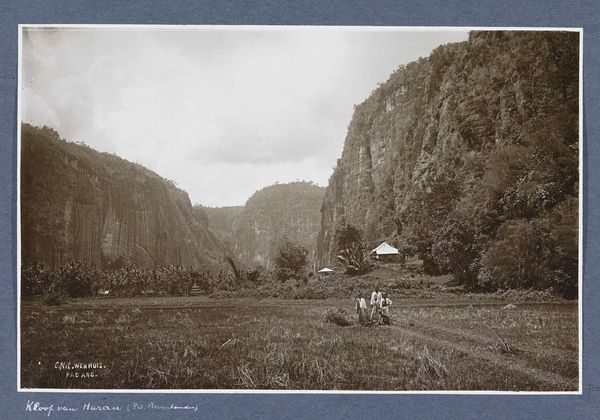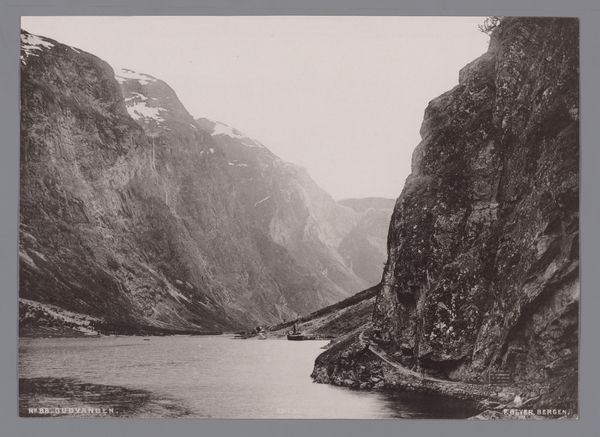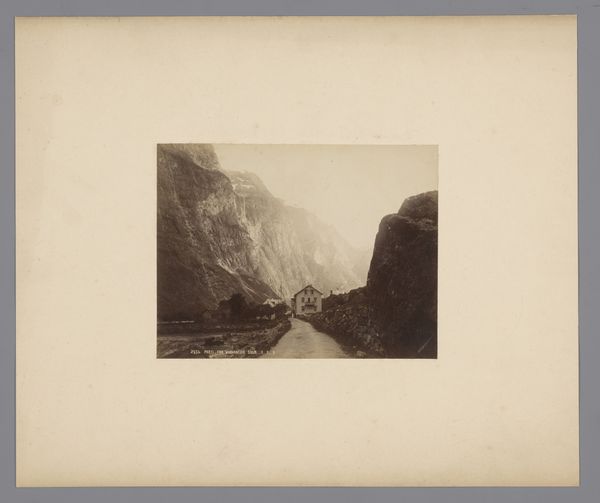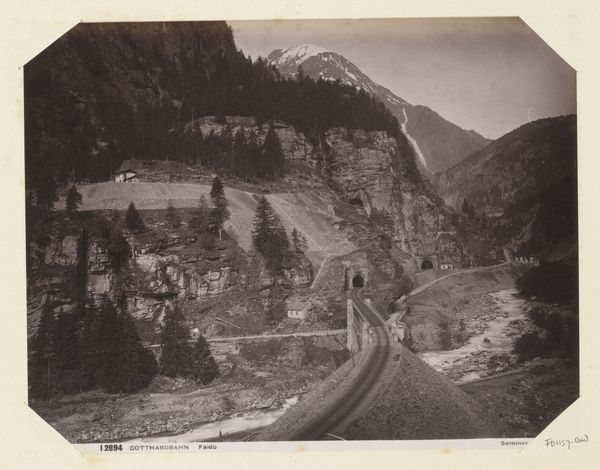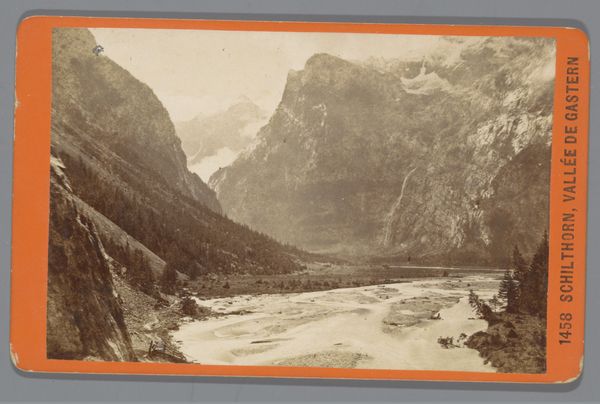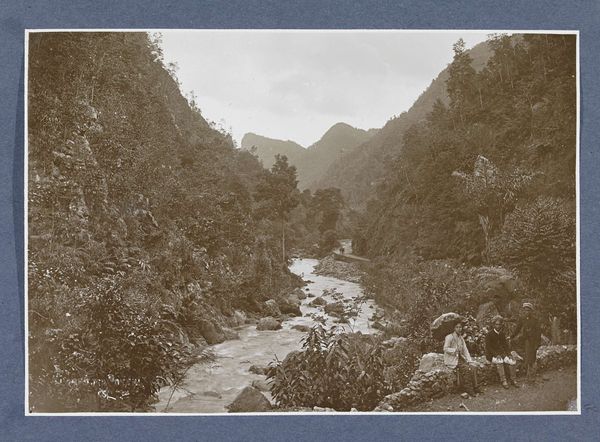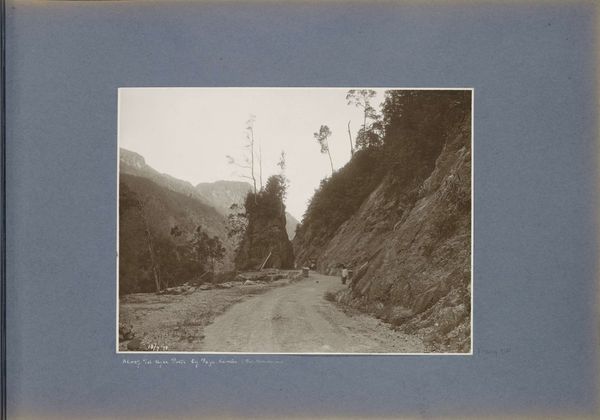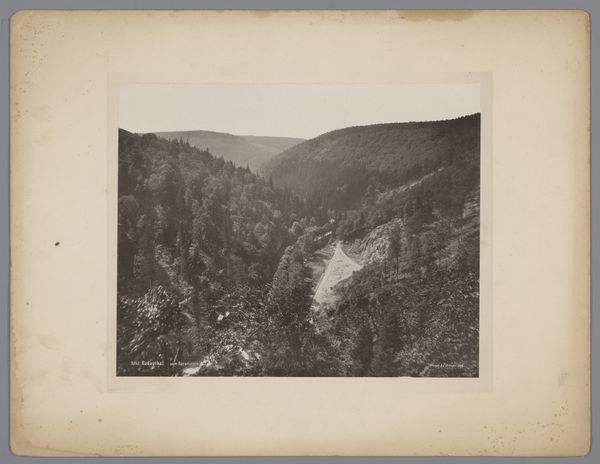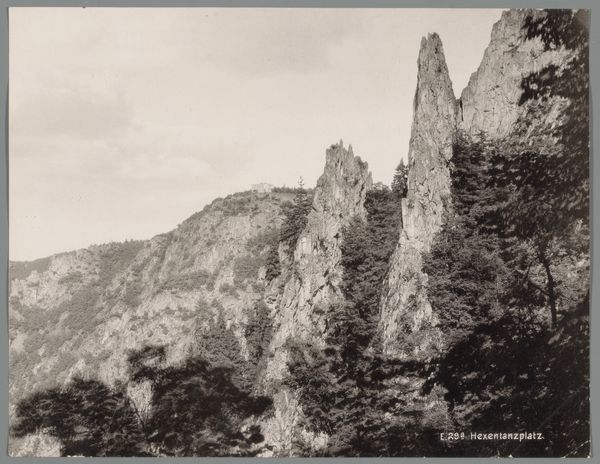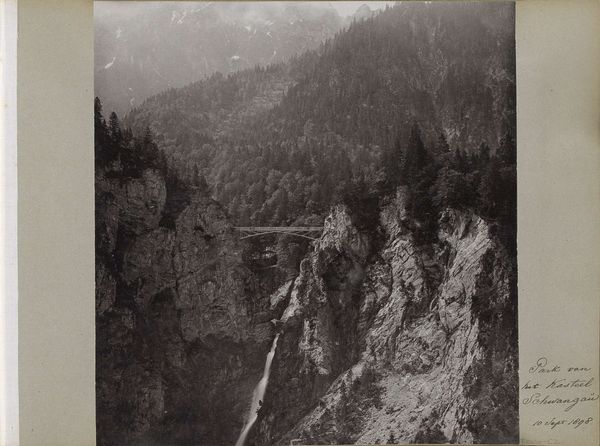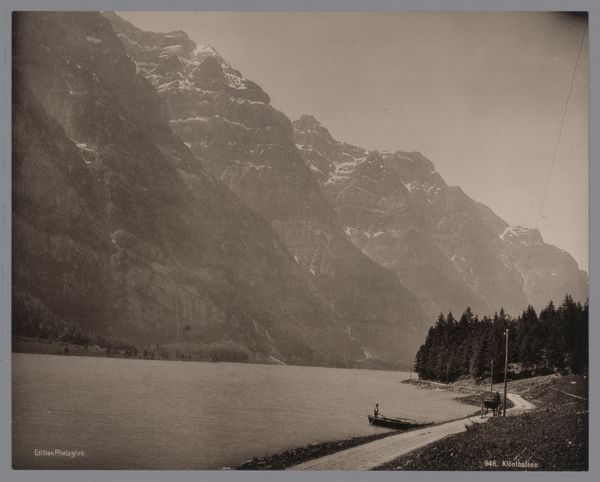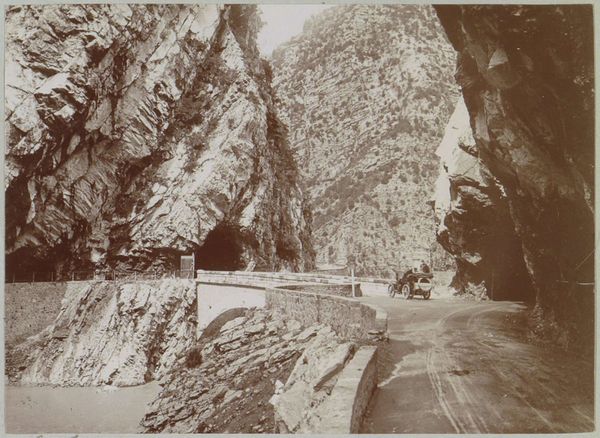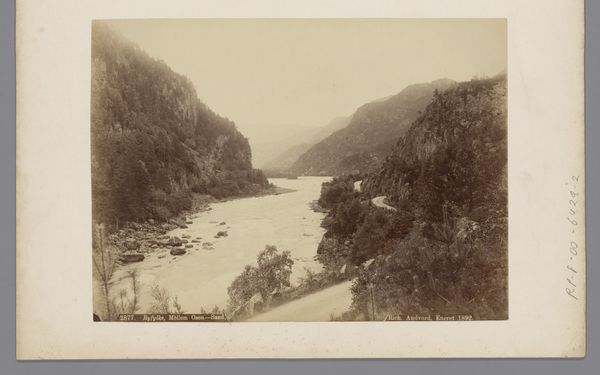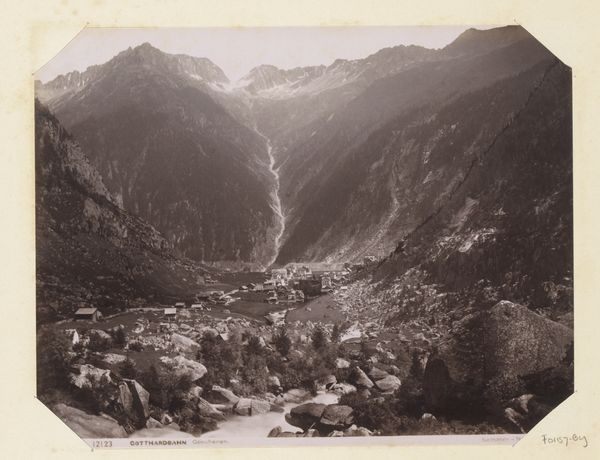
Kloof van Harau op Sumatra met karrenspoor c. 1900 - 1920
0:00
0:00
photography
#
pictorialism
#
landscape
#
photography
#
orientalism
Dimensions: height 203 mm, width 284 mm
Copyright: Rijks Museum: Open Domain
Curator: Looking at this photograph, what strikes you? Editor: Immense scale. I’m struck by the drama of these monumental cliffs that feel primeval, untouched. There's a path though that implies human encroachment on the scene. Curator: That tension is central, I think. This is a vintage photograph entitled "Kloof van Harau op Sumatra met karrenspoor", or "Harau Gorge in Sumatra with Cart Tracks," by Christiaan Benjamin Nieuwenhuis. It likely dates from between 1900 and 1920. Editor: So it’s from a period when Westerners were increasingly moving through these landscapes. The photograph aestheticizes it as empty, monumental "nature," but the path implicates it in a network of power. Curator: The road certainly presents evidence of imperial penetration but look at the composition— the converging tracks lead the eye deeper into the landscape as if inviting viewers on a transformative journey. I’m drawn to the tonal range of the photograph; from dark, almost black foreground details, to lighter tones toward the center, Nieuwenhuis invites a contemplative reading. It reflects a desire to distill the landscape’s spiritual essence. Editor: But who gets to experience that "spiritual essence"? Pictorialism romanticizes and distills the local population from their environment in ways that reflect power structures. Consider who has the leisure to travel and contemplate. What happens to the indigenous people whose homes and paths become part of this "sublime" view? Curator: I acknowledge the photograph may be symptomatic of larger issues during the Dutch colonial rule but should the aesthetics be discounted due to such historical injustices? Perhaps instead, this serves as an archival testament of human activity’s indelible imprint onto our world. Editor: I agree. Looking at this now from our vantage point of the twenty-first century is an entry to discuss critical issues pertaining the past that continue impacting us in the present. Curator: An interesting dialogue about cultural memory. Editor: Absolutely, one worth further reflection.
Comments
No comments
Be the first to comment and join the conversation on the ultimate creative platform.
